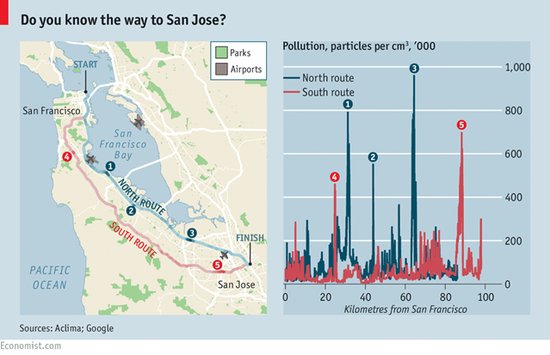2018年上半年全国大学英语四六级考试于6月16日进行,考试网为你带来第一手英语四级考试资讯。以下为部分英语四级选词填空原文及答案:
四级选词填空原文及答案
26 pollutants
27 restricted
28 consequence
29 innovation
30 detail
31 intended
32 outdoor
33 collaborating
34 inhabitants
35 creating
Air quality
Something in the air tonight
Tackling atmospheric pollution is hard。 More data will help
Print edition | Science and technology
Feb 13th 2016 | LOS ANGELES
SINCE the 1940s, southern California has had a reputation for smog。 Things are not as bad as once they were but, according to the American Lung Association, a health group, Los Angeles is still the worst city in the United States for levels of 26 ozone, nitrogen oxides, hydrocarbons and carbon monoxide。 Gazing down on the city from the Getty Centre, an art museum in the Santa Monica Mountains, haze can blot out the view of the Pacific Ocean。 Nor is the state’s bad air 27 restricted to its south。 Fresno, in the central valley, comes top of the list in America for year-round particulate pollution。 Residents’ hearts and lungs are strained as a 28 consequence。
All of which, combined with California’s reputation as the home of technological 29 innovation, makes the place ideal for developing and testing systems designed to monitor pollution in 30 detail。 And that is just what Aclima, a fledgling firm in San Francisco, has been doing over the past few months。 It has been trying out arrays of monitoring stations, some of them mobile, that are 31 intended to yield minute-to-minute maps of 32 outdoor air pollution。 Such stations will also be able to keep an eye on what is going on inside buildings, including offices。
The stations in Aclima’s arrays are triangular and measure 20cm along a side。 Each contains 12 off-the-shelf sensors that detect pollutants such as ozone, carbon monoxide and methane, as well as the small particles of which smog is composed。 They also monitor basic data such as temperature and humidity, which affect how pollution forms and lingers。 The elements of an array may be fixed and spaced according to what exactly they are trying to measure。 Or they can be attached to vehicles, so that entire roads can be sampled routinely。
To this end, Aclima has been 33 collaborating with Google’s Street View system, resulting in maps such as the one below。 Davida Herzl, Aclima’s boss, says they have, as expected, revealed pollution highs on days when San Francisco’s transit workers went on strike and the city’s 34 inhabitants were forced to take to their cars。 Conversely, “cycle to work” days have done their job by 35 creating pollution lows。

Aclima has already, at Google’s expense, mapped 20,000km (12,000 miles) of roads in the Bay Area this way。 It plans to produce a detailed map of the air quality of California’s most populous regions—those around Los Angeles, San Francisco and the Central Valley—before the year is out。 It will then move on to the rest of America and (Ms Herzl hopes) beyond。 For such outdoor work, most of its customers are likely to be charitable foundations or governments。 But Aclima hopes to make money from the private sector as well, by measuring pollution levels indoors。
Again, Google has acted as a guinea pig。 It has been testing Aclima’s technology in its offices for the past two years, crunching through more than half a billion data points a day on the air quality within them。 The result, according to Ms Herzl, is the world’s largest pollution-related database on indoor environments。
Without wind and other weather to move them on, these data show, indoor levels of many nasties can be between two and five times those outside。 The Googleplex is in Silicon Valley—a relatively clean part of the state。 If such ratios also apply on a smoggy day in LA, watch out。
Print edition | Science and technology
Feb 13th 2016 | LOS ANGELES
- 06-18· 2019年6月英语四级选词填空真题及答案(卷二)
- 12-24·2018-2013年英语四级词汇真题汇总
- 11-28·2018年12月英语四级选词填空真题及答案
- 06-19·2018年6月英语四级选词填空真题解析
- 06-16·2018年6月英语四级选词填空真题及答案
- 12018-12-242018-2013年英语四级词汇真题汇总
- 22018-11-282018年12月英语四级选词填空真题及答案
- 32018-06-192018年6月英语四级选词填空真题解析
编辑推荐
- 模拟试题
- 历年真题
